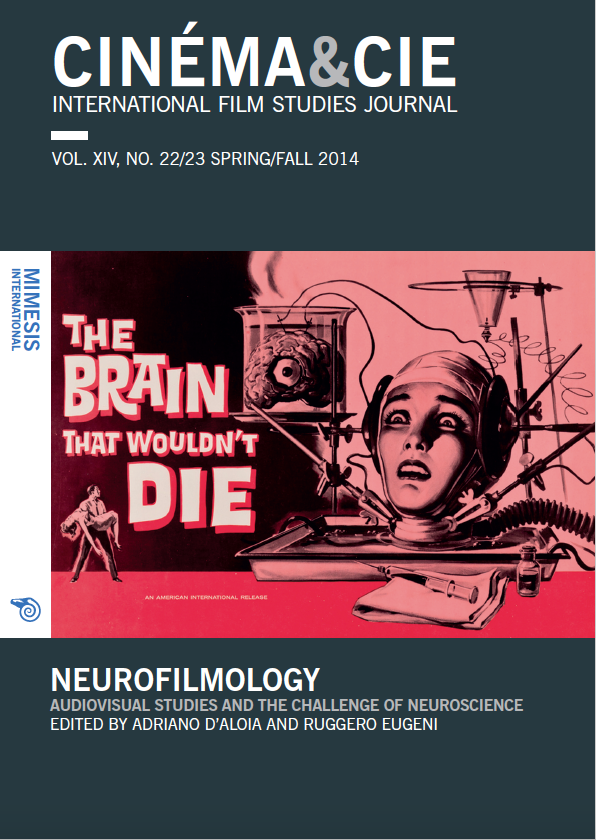Neuroaesthetics and Neurocinematics: Reading the Brain/Film through the Film/Brain
Abstract
This article offers a critique of neuroaesthetics and neurocinematics. Neuroscientific research aims at a quantitative assessment of the impact of different art and film styles on viewers’ brains through functional magnetic resonance imaging (fMRI) and inter-subject correlation (ISC) analysis. Advocates of neurocinematics, in particular, believe the turn to neuroscience will help film theory go beyond ideological, linguistic and psychoanalytic models, i.e. subject-positioning theories (SLAB theory: Saussure, Lacan, Althusser, Barthes), which draw a pessimistic picture of the subject as “split” and “positioned,” “trapped” both internally (by unconscious forces) and externally (by various ideological discourses, including the film apparatus itself). I argue that by positing a looping effect between the brain and the screen, neurocinematics shows itself to be an extension of apparatus theory, although one rooted in neuroscience rather than in SLAB theory. Furthermore, although “the New Materialism” – of which neuroaesthetics and neurocinematics are two representative instances – positions itself as “post-human” in its commitment to granting the non-human agency and vitality and to acknowledging its affective, ethical and political potential, it covertly carries on some of the assumptions and beliefs fundamental to post-structuralism even as it claims to “de-anthropomorphize” philosophy, aesthetics, and film theory.






